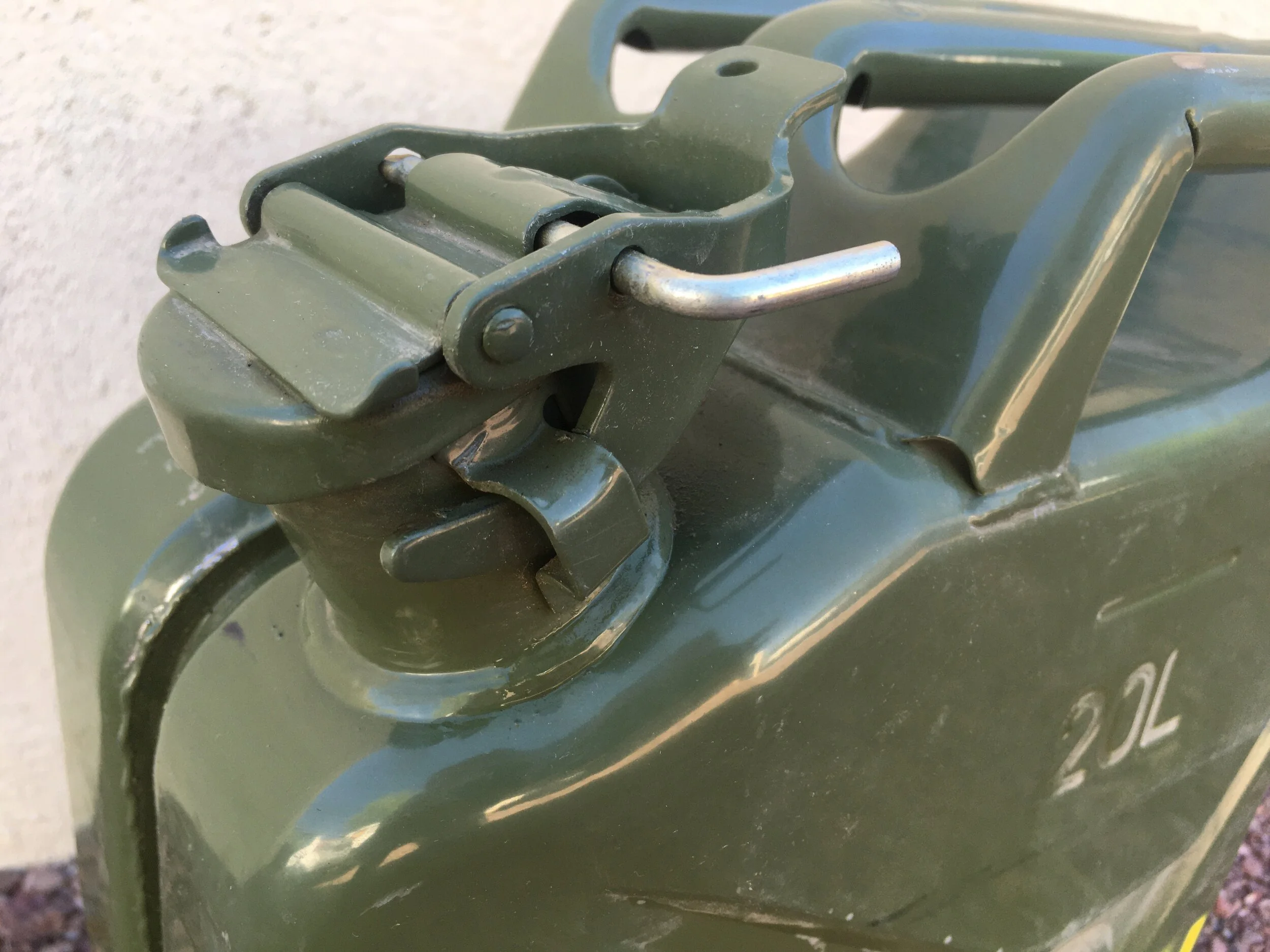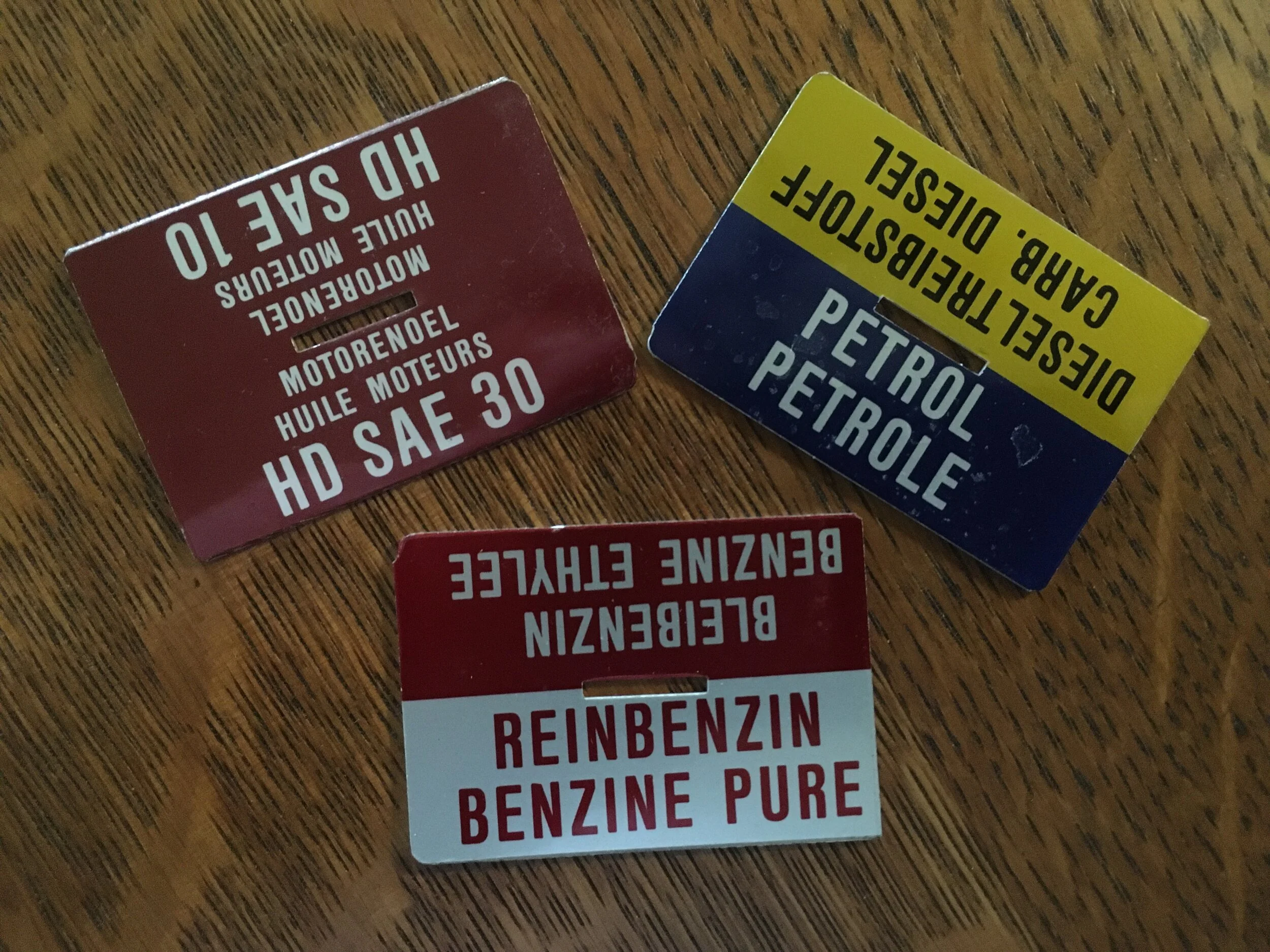NATO fuel can FAIL (in context)
I can smugly claim to be a pioneering adopter of the NATO jerry can—pioneering, at least, in terms of North American overland travelers.
Like most U.S. 4x4 owners in the 1980s I carried spare fuel in the typical “Blitz” can, developed by our military during WWII. And I loathed them.
Their wide screw-in caps leaked. Always. No matter how I levered them closed with the biggest screwdriver I owned, any exposure to burning Arizona sun in weather over, say 60ºF would cause fumes and fuel to seep out around the gasket. As if that weren’t bad enough, fully half the ones I owned also leaked around the crimped bottom seam. The screw-in spouts available for the cans leaked as well, and were glacially slow in dispensing the contents. Filling the FJ40’s tank from one of the infernal things was always a smelly, protracted, curse-rich job.
At some point back then—perhaps in an early Tom Sheppard article, I don’t exactly remember—I read about and saw a photo of the NATO can, the genetically identical descendant of the brilliant WWII German Wehrmacht fuel container.
The Germans had developed a fuel can that was formed in two vertical clamshell haves and perimeter-welded together, creating an absolutely leakproof container. The spout/filler, likewise, was welded on, and secured with a cammed lid that put tremendous pressure on the sealing gasket yet opened easily. It was long enough to eliminate the need for a separate spout in many circumstances. The three handles were designed so that one man could carry two empty cans in each hand or a balanced full one in each, and so that full cans could be quickly passed down a line of soldiers unloading them from a truck or plane. When necessary, a separate, leakproof pour spout used the same cammed attaching system and incorporated a breather that quickly emptied the contents with zero spillage.
In the North African Campaign of 1940 and 1941, the British charged with holding back the Italians from the Suez Canal received their fuel in squarish four-gallon containers so criminally flimsy they were universally referred to as Flimsies. On a transport flight, a ship, or a truck carrying supplies to the front, it was accepted that 20 to 30 percent of the fuel would be lost through leaking or bursting Flimsies (at least one ship was lost to the resulting fire). Their best feature was that the tops were easy to cut off, so the bottom could be filled with petrol-soaked sand and lit to use as a cooker. The hack was known as a Bengazi Burner.
From left, an early (WWI-era), strong but heavy British two-gallon container, two Flimsies, and a Wehrmacht fuel can.
Once the Germans showed up to reinforce the Italians, Brits did not have to wrestle with national pride to scrounge and employ the superb containers Rommel left behind on his retreat to Tunisia. They sent examples home, the MOD with a similar lack of false pride immediately began replicating them—and the rest is history.
Except . . . some of those Wehrmacht cans were also sent stateside. And instead of simply copying them, those in charge of U.S. procurement decided to cut costs. They substituted a crimped bottom seam for the welded seam, and simplified the lid as well. In fact the only feature carried over was the triple handle. While our troops might not have been dismayed by a little leaking fuel, they couldn’t have known what they were missing when it took them two minutes or more to empty a Blitz can into a Jeep while under fire, while German soldiers were filling their Kubelwagens in half the time.
Thus, in 198 . . .? I found a source for surplus NATO jerry cans and bought two at hideous expense—I think they were $50 each at the time when a new Blitz can could be had for $8.99.
And I’ve never looked back. I’ve never had a NATO can leak through a spout gasket, even when the can was only half full of fuel in 100º-plus weather and the sides of the can bulged from the expanding air inside. I’ve stored them full on their sides without issue. Roseann and I drove through Baja in our FJ55 with a full NATO can secured inside—no, not a smart thing to do, but it never even gave off a whiff of odor.
In 1993 I had a beautiful rear spare-tire rack and jerry-can holder made for the FJ40 by a company in New Mexico called Stout Equipment (sadly no longer in existence). I decided it needed a pair of cans of equal style, and found two surplus German cans, marked “Treibstoff Feuergefärlich 20L.” They were undated but in excellent condition, and each came with a tag holder next to the spout, along with a selection of metal tags to slip in to the holder to identify the contents.
For the next 27 years those two used cans served as my auxiliary fuel containers. Every few years I repainted them with a rattle can; once I treated them to new filler gaskets. They served flawlessly.
Until the other day.
I walked out to the Land Cruiser, smelled fuel, and noticed a stain under the rear carrier. After two and a half decades of being clamped down on the rack (and whatever service came before that), a tiny stress crack, perhaps an eighth of an inch long, had opened up on one side. I decanted the gasoline into the 40 and set the can aside to dry.
If this had happened in the field I could have repaired it with some JB Weld and carried right on using it, but I think it’s earned an honorable retirement.
And the final good thing is, this product is entirely recyclable and/or biodegradable. I seriously doubt many of the military’s current plastic Scepter fuel cans will still be in service in 30-odd years, and when they are retired there’s a good chance they’ll wind up in tiny bits circulating in the Pacific Ocean.
Long live the NATO fuel can.
New, high-quality NATO fuel (and water) cans are available from Wavian.





